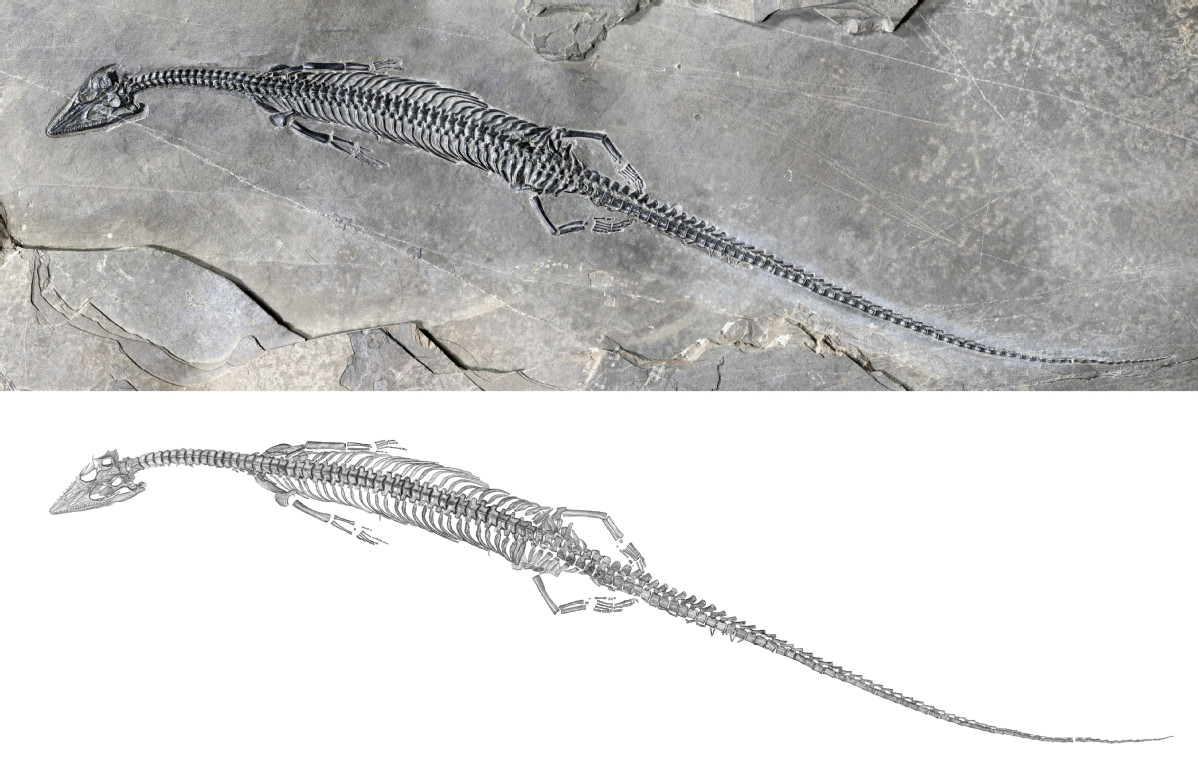244m-year-old reptile's tail longest of its kind
By Zhang Zhihao | China Daily | Updated: 2022-05-18 09:32

In the world of reptiles, the size of the tail matters. Some species use their long tails for balance, such as the Asian grass lizard and the green basilisk, while marine reptiles use their tails for propulsion and maneuverability.
Earlier this month, Chinese scientists reported the discovery of a complete fossil skeleton of a new species of marine reptile in Yunnan province that roamed the ancient sea about 244 million years ago during the Triassic period.
The prehistoric creature was named Honghesaurus longicaudalis, and it possessed the longest tail of any known pachypleurosaurs. It is also China's oldest fossil record of this family of reptiles.
Pachypleurosaurs are a group of small to medium-sized lizard-like marine reptiles from the early to middle Triassic. The fossil is 47.1 centimeters long, and its tail spans more than half of its body length at 25.4 cm.
Remarkably, the tail of the discovered reptile contains 69 vertebrae, far more than any other known pachypleurosaur, which typically have no more than 58.Humans in comparison have just 33 vertebrae.
Scientists believe its long body paired with a lengthy tail could have provided it with good energy efficiency and maneuverability in water, making it an excellent swimmer, according to a study published in the journal Scientific Reports.
Xu Guanghui, a researcher from the Institute of Vertebrate Paleontology and Paleoanthropology at the Chinese Academy of Sciences, said when he first saw the Honghesaurus fossil, he was told that it might be another previously discovered reptile called Wumengosaurus.
But Xu was not convinced and decided to investigate. This led him to find out that the animal from the fossil was actually an evolutionary transition between two species of pachypleurosaurs, namely Qianxisaurus and Wumengosaurus.
As early as 1854, scientists had discovered Pachypleurosaurus fossils in the Alps. The first named marine reptile discovered in China also happened to belong to this family. It was called Keichousaurus, and was discovered by renowned Chinese paleontologist Hu Chengzhi in 1957.
Pachypleurosaurs are regarded as the basal members of the superorder Sauropterygia, which includes the plesiosaurs, a large, long-necked marine reptile that ruled the Jurassic seas and has made frequent appearances in myth and popular culture.
























